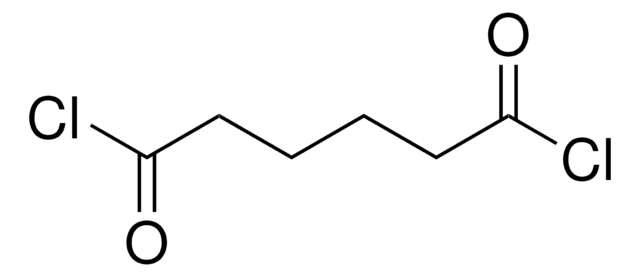13-0730
Hexamethylenediamine
SAJ first grade, ≥98.0%
Synonym(s):
1,6-Diaminohexane, 1,6-Hexanediamine, HMDA
About This Item
Recommended Products
grade
SAJ first grade
vapor density
4 (vs air)
assay
≥98.0%
form
solid
expl. lim.
6.3 %
availability
available only in Japan
refractive index
n20/D 1.439 (lit.)
pH
12.4 (25 °C, 100 g/L)
mp
42-45 °C (lit.)
density
0.89 g/mL at 25 °C (lit.)
SMILES string
NCCCCCCN
InChI
1S/C6H16N2/c7-5-3-1-2-4-6-8/h1-8H2
InChI key
NAQMVNRVTILPCV-UHFFFAOYSA-N
Looking for similar products? Visit Product Comparison Guide
signalword
Danger
hcodes
Hazard Classifications
Acute Tox. 4 Dermal - Acute Tox. 4 Oral - Eye Dam. 1 - Skin Corr. 1B - STOT SE 3
target_organs
Respiratory system
Storage Class
8A - Combustible corrosive hazardous materials
wgk_germany
WGK 1
flash_point_f
176.0 °F - closed cup
flash_point_c
80 °C - closed cup
ppe
Eyeshields, Faceshields, Gloves, type P3 (EN 143) respirator cartridges
Certificates of Analysis (COA)
Search for Certificates of Analysis (COA) by entering the products Lot/Batch Number. Lot and Batch Numbers can be found on a product’s label following the words ‘Lot’ or ‘Batch’.
Already Own This Product?
Find documentation for the products that you have recently purchased in the Document Library.
Our team of scientists has experience in all areas of research including Life Science, Material Science, Chemical Synthesis, Chromatography, Analytical and many others.
Contact Technical Service







